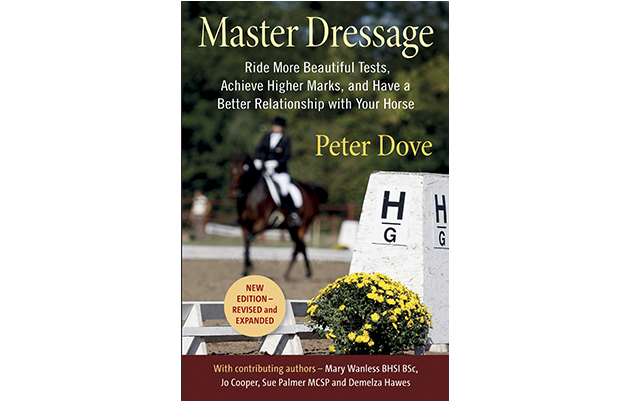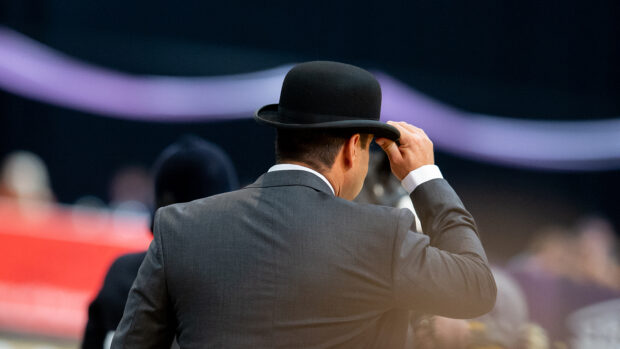In the latest edition of dressage judge Peter Dove's book 'Master Dressage', he looks at the comments that judges make — and what you can learn from them
We judges are there to observe and make comments and not there to deliver lessons.
Certainly, in the time available and in the space available it’s difficult to impart meaningful advice. In its place we restrict ourselves to comments which relate to the directives and the requirements of the movements.
It can be difficult for even some of the more experienced riders to translate a judge’s comment into some actionable correction or changes to training they can make.
With so few words written it is easy for the rider to misinterpret the intended meaning, especially if they are not aware of the scales of training and have an imperfect understanding of what the particular movements are demonstrating to the judge. Some typical comments are:
Needs more suppleness
This could mean that you need to demonstrate more suppleness by improving your accuracy or fluidity. It could also mean that the horse is not yet supple enough for the movement being asked of him, for example perhaps he does not change bend smoothly, or perhaps he does not show enough bend.
Inconsistent to contact
This could mean several things. It could mean that your horse does not keep his head-carriage steady, or that he is moving his head around playing with the contact (for instance a horse who flicks his head forward and back). Regardless of the different ways in which a horse could be inconsistent to the contact, they all mean one basic thing; that the horse has not yet learnt to reach toward the contact over his back and over his neck in a consistent way.
Continued below…

25 signs you’re an incurable dressage diva/divo
Does seeing female competitors without hairnets make your stomach do a little flip? And is all your kit patent or
Against hand
This normally occurs in downward transitions, but can also be seen in upward transitions. It could mean the horse is throwing his head against the hand upwards, or that the horse is leaning against the rider’s hand.
Lacking/losing rhythm
This is used when referring to a changing tempo, and also when the rhythm of the gait is breaking down. For instance if the walk becomes tense, or the horse begins anticipating canter. Some judges are more discerning and use the words tempo/rhythm more correctly.
Needs more jump
This is often used with the canter and means that the horse needs to make a bigger thrust off the ground each stride. It is usually a sign that the horse is rather flat in his strides.
Going too deep, behind the vertical
The horse is behind the vertical either because he is too tight under the gullet (either through being behind the contact or horse/rider pulling) or because his head and neck are too low.
Needs to show more difference
Often used in the medium gaits to explain to the rider there needs to be more difference in the length of the strides between working and medium gaits.
Needs more ground cover
This, too, is often used in the medium gaits and in free walk to describe a lack of length of stride. Usually here the horse is not overtracking.
Tight over back
The horse is a little hollow or tense over his back and does not reach correctly towards the contact.
Needs more energy, more impulsion
The horse needs to show more energy within an appropriate tempo.
Losing balance
This can happen in downward transitions, changes of bend and so on. Symptoms usually include tempo speeding up, loss of outline through hollowing, or even tripping.
Quarters-in
Usually in canter, the horse is swinging his pelvis to the inside so that he is no longer straight.
Poor positioning
This is often used in lateral work to describe a poor preparation or beginning to a lateral movement. Another phrase to go with this would be ‘losing positioning’ which could mean the correct angle for the movement is varying or being lost.
On shoulders/On forehand
Horse is usually heavy in front, leaning on the rider’s hand, with not enough impulsion and often losing his natural tempo in favour of speeding up. Sometimes, too, the horse will be on the forehand losing speed and energy.
Above bit, hollow
Horse is lifting his head and hollowing his back.
Tight/short in neck
The horse’s neck is too short – this can be a result of tension, the horse drawing his head back away from the rider’s hand, or the rider pulling on the reins.
Needs to flow more freely forwards
The horse is probably being a little lazy to the rider’s leg aids and needs to move more actively of his own accord. It can also mean that the horse is holding tension through his body and therefore cannot step as freely and as actively as he should.




